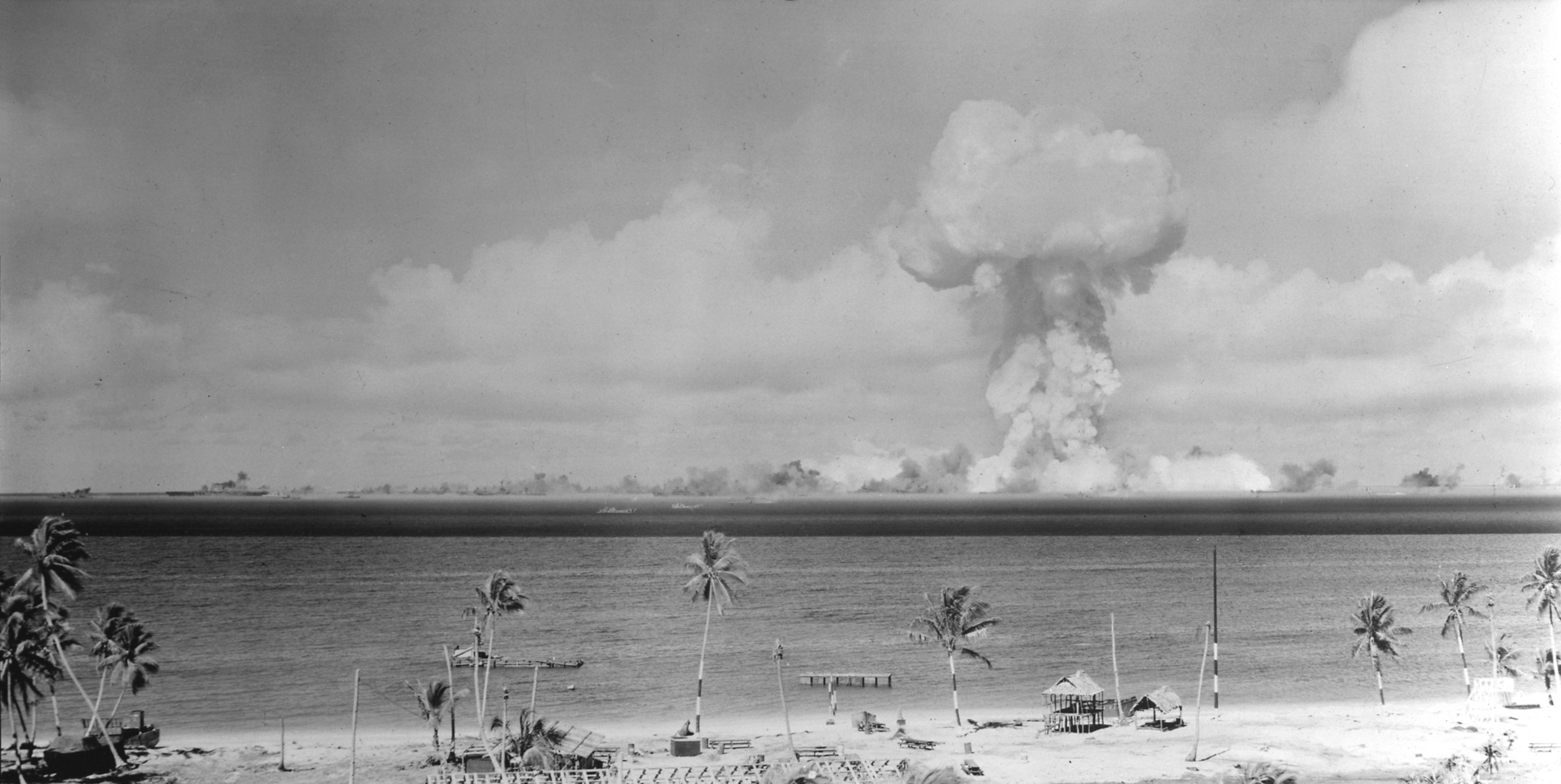Radioactivity still persists in parts of the Marshall Islands from nuclear testing in the 1940s and 50s, according to new research.
Published in the journal PNAS, one of the three new papers states that while the background radiation levels are safe in the islands which are currently inhabited, gamma radiation persists in Bikini Atoll and other ground-zero test sites.
A second study found that fruits grown in some of the northern Marshall Islands – including coconuts – are contaminated with a radioactive isotope of Caesium at much higher levels than those found near Chernobyl or Fukushima.
In the third paper, scientists found the top 25cm of soil in the bomb crater of the largest hydrogen bomb tested in Bikini Atoll in the Marshall Islands still shows significant levels of plutonium and other radioactive isotopes.
The SMC asked experts to comment on the findings.
Dr David Krofcheck, Department of Physics, University of Auckland, comments:
“The three papers from the Center of Nuclear Studies, Columbia University, are the first large scale measurements of radioactive isotopes produced from the USA testing of nuclear weapons from 1946 through 1958 in the Marshall Islands.
“Foods tested, coconuts and pandanus, show a variety of radioactivity levels with the lowest levels detected in fruits from atolls farthest away from the weapons test sites. Northern atolls where most weapons tests were performed showed the much higher radioactivity levels. Bikini Atoll had considerably larger levels, well above most international norms for food safety. Research needs to be done on local sea food.
Both Bikini and Naen atolls also had the highest soil radiation, mostly from gamma rays, than any of the southern atolls. Bikini, which maintained the highest population before 1946, is certainly too contaminated to consider for population relocation.
“The southern city of Majuro, in which most of the Marshall Islands population lives, has a radiation background comparable to that of Central Park, New York. Radiation in the tested foods near Majuro showed levels safely within worldwide standards.
“All of these measurements are important due to the potential for repopulation of at least some of the atolls in the Marshall Islands. Such measurements of the effects of nuclear weapons testing in the Marshall Islands must continue on a regular basis into the indefinite future.”
I have no conflict of Interest with the scientists or work presented in these papers.
Cris Ardouin & Michael Lechermann, Senior Scientists, National Radiation Laboratory, ESR, comment:
“Fallout from nuclear weapons testing has entered the Earth’s environment on a global scale. It is known that former test sites like the ones on the Marshall Islands show elevated levels of radioactivity. The exposure to radiation associated with environmental radioactivity at the reported levels is generally low or comparable to other sources of radiation, such as naturally occurring radon, cosmic radiation at higher altitudes and diagnostic medical exposures.
“The National Radiation Laboratory, now within ESR, has been continuously monitoring environmental radioactivity in New Zealand and the South Pacific region since 1960. Levels of radioactive fallout have continued to decline as would be expected since the cessation of nuclear weapons testing in the region. ESR also provide technical expertise and operational support in the verification of the Comprehensive Nuclear Test Ban Treaty (CTBT) that aims to abolish all types of nuclear weapons testing.”
No conflict of interest declared.
